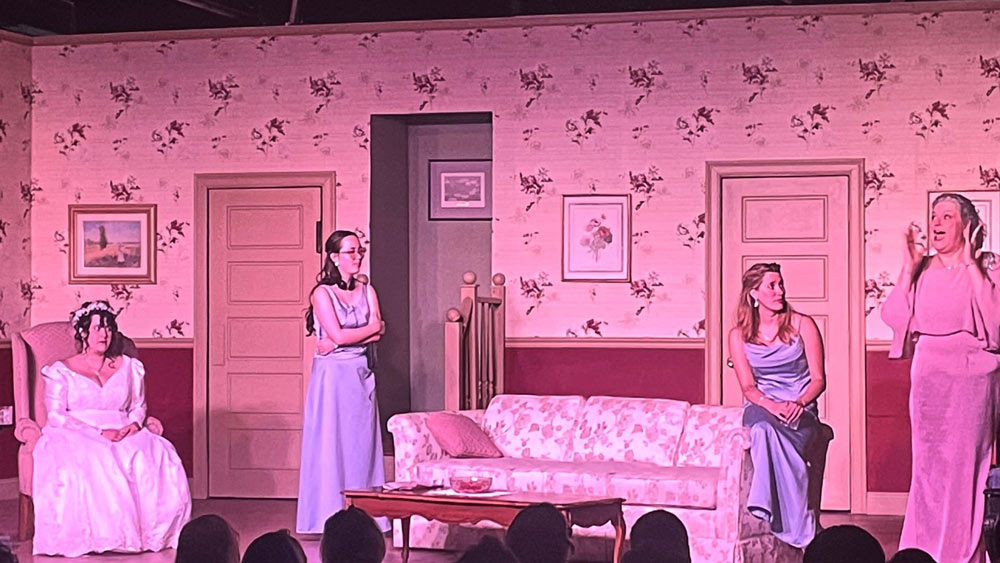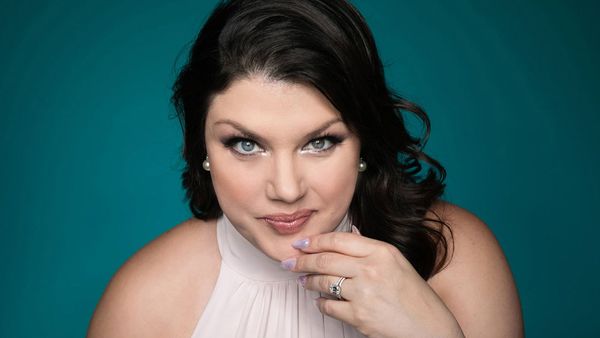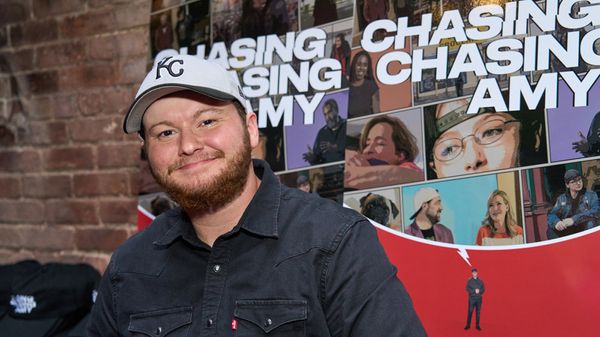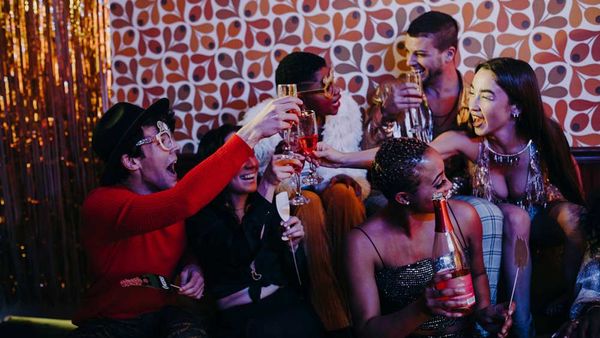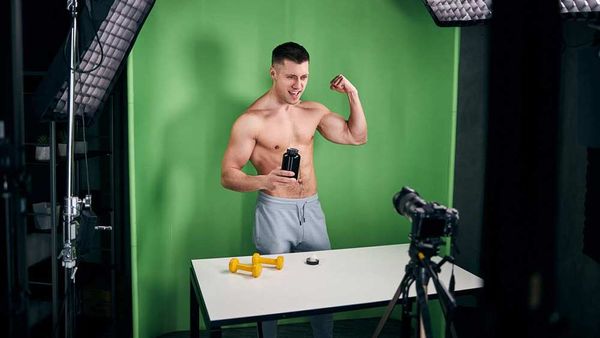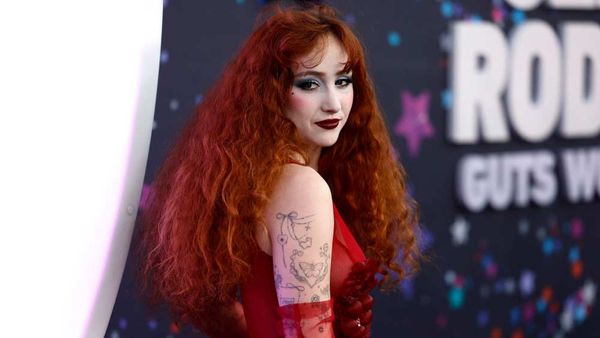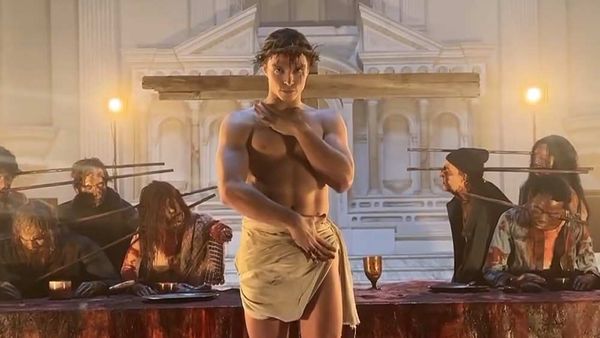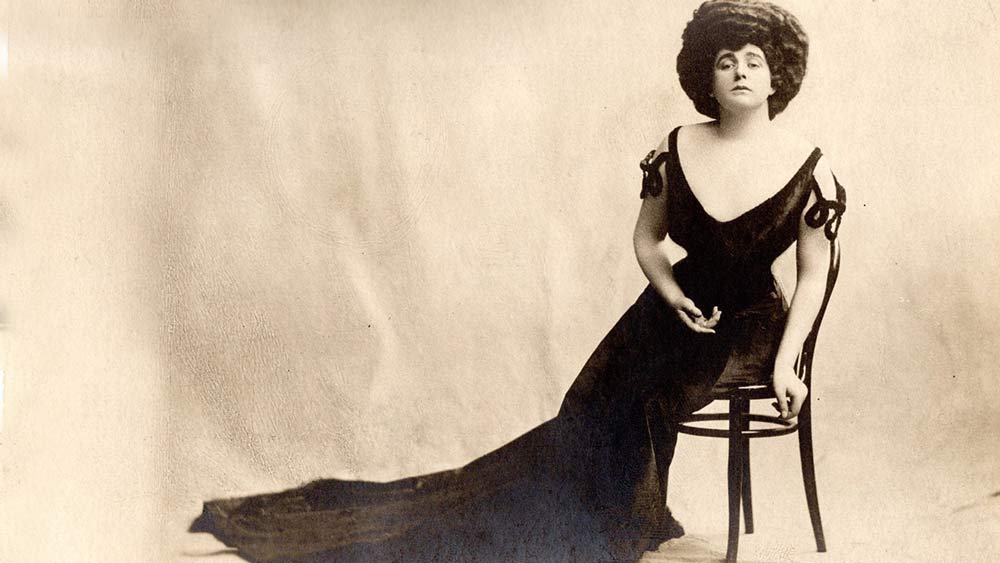
Sep 18
New Bio Looks at America's First Drag Superstar Julian Eltinge
Kilian Melloy READ TIME: 8 MIN.
Julian Eltinge was, biographer Andrew L. Erdman writes in "Beautiful: The Story of Julian Eltinge, America's Greatest Female Impersonator," a superstar of the drag world, a man whose portrayal of all-American femininity dazzled and (at least, in the theatrical sense) seduced audiences across the country. He was celebrated, adored, and quite well paid; he had to be, to maintain the trunks full of extravagant costumes he needed for his shows.
If the story sounds familiar, but the name does not, maybe that's because all of this was more than a hundred years ago.
Eltinge was born William Dalton in 1881 in Newtonville, Massachusetts. He specialized in embodying what Americans thought of as femininity at the time. His milky skin, wardrobe, posture, and gestures communicated commonplace ideals of womanhood like the so-called "Gibson Girl," whose silhouette Eltinge perfectly replicated by stuffing himself into a corset that turned his frame into what back then was seen as a beauteously slim – impossibly slim might be a better word for it – shape.
"In a time when politicians weaponize gender and sexuality," Erdman's website explains, "Eltinge's story offers complex insight into cultural ideas about masculinity and femininity, reminding us that humans have always contained multitudes."
Eltinge wasn't alone in his art. He was one of a multitude of artists who made a living dressing, walking, and gesticulating not necessarily the way actual women did, but as the audience expected they should. Like any great showman, Eltinge took what the spectators brought into the theater and sold it back to them, honed and polished to perfection.
His onstage mastery of gender illusion notwithstanding, Eltinge sought to project an image of rough-and-ready manhood, and boasted (though perhaps with questionable basis) of serving up the occasional knuckle sandwich to any theater worker who might throw a casual insult his way based on his drag routine. But his sexuality remains murky and his private life nebulous; there's reason to think he might have been queer, but no real evidence. To assemble this biography, Erdman had to rely on interviews and second-hand accounts. Not much, if anything, in the way of letters or journals seem to exist.
Still, Erdman follows the breadcrumbs that mark the trail of Eltinge's life through his childhood, his youthful fascination with theater and the adoption of his childhood best friend's surname as his own stage name, his stunt engagement to fellow vaudevillian Eva Tanguay, and his close working relationship – and possibly more – with producer Albert "A.H." Woods.
EDGE caught up with Andrew L. Erdman to learn more about the "gender illusionist" who took the country by storm decades before the "RuPaul" revolution restored drag to mainstream entertainment.
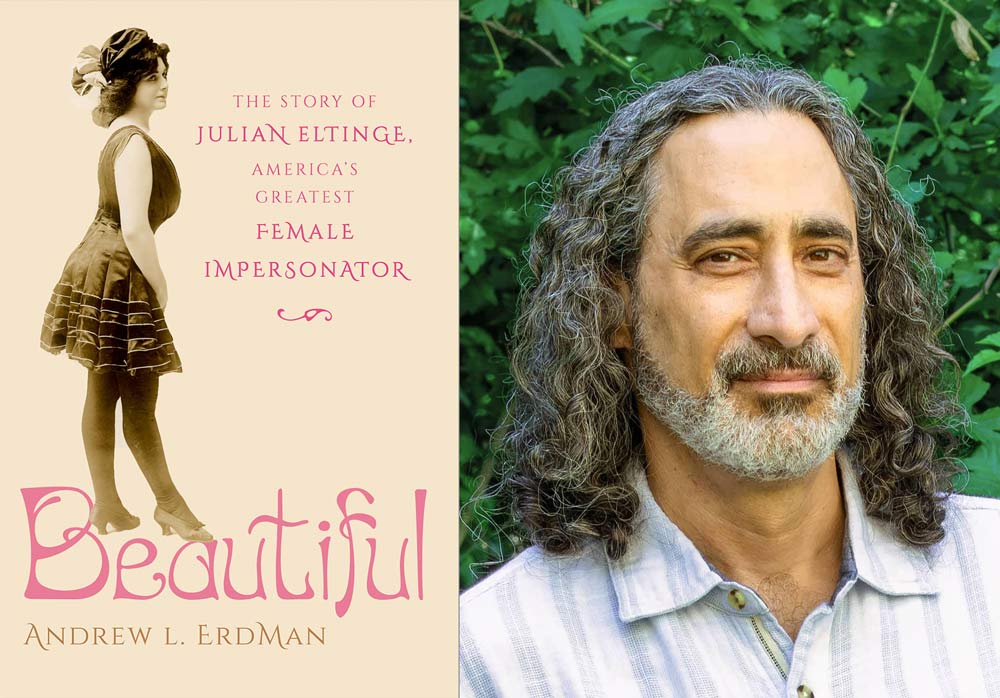
EDGE: Did you get an intuition, in the course of your research, about what was going on with Julian Eltinge?
Andrew L. Erdman: My sense is that Julian Eltinge probably had some erotic feelings for men, which may have taken the form of some very quiet sexual affairs. He doesn't seem to have had any enduring, obviously romantic relationships with men. He did have long, intimate friendships with both men and women, and there are certain other tropes about his life which people have pointed to, suggesting that perhaps he was gay because of his interest in design. He was a brilliant designer and curator on his own terms.
EDGE: You write that it was because Julian Eltinge "reinforced" gender roles and presentations so faithfully that he was admired as an artist and not dismissed – or even prosecuted – as an "invert" or a "pervert."
Andrew L. Erdman: I think he precisely understood what was meant by the normative definitions at the time of masculine and feminine. And he presented it, for the most part, so faithfully that he signaled to the public, "Look, I get what these roles are supposed to be. I'm going to do it perfectly. I'm going to do it even more perfectly than a lot of women do it."
He presented himself as a professional and as an artisan, and as somebody who spent many hours developing his technique and performances. When he's off stage he's, in a way, equally playing a perfect masculine drag. He's claiming to have been a Harvard athlete; he smokes cigars; he claims to know a lot about the stock market. All this kind of bro stuff, in the early part of the century. What he believes in his heart, we don't know, but he definitely is able to say, "Look, I get what the perfect archetypes are."
Kilian Melloy serves as EDGE Media Network's Associate Arts Editor and Staff Contributor. His professional memberships include the National Lesbian & Gay Journalists Association, the Boston Online Film Critics Association, The Gay and Lesbian Entertainment Critics Association, and the Boston Theater Critics Association's Elliot Norton Awards Committee.
